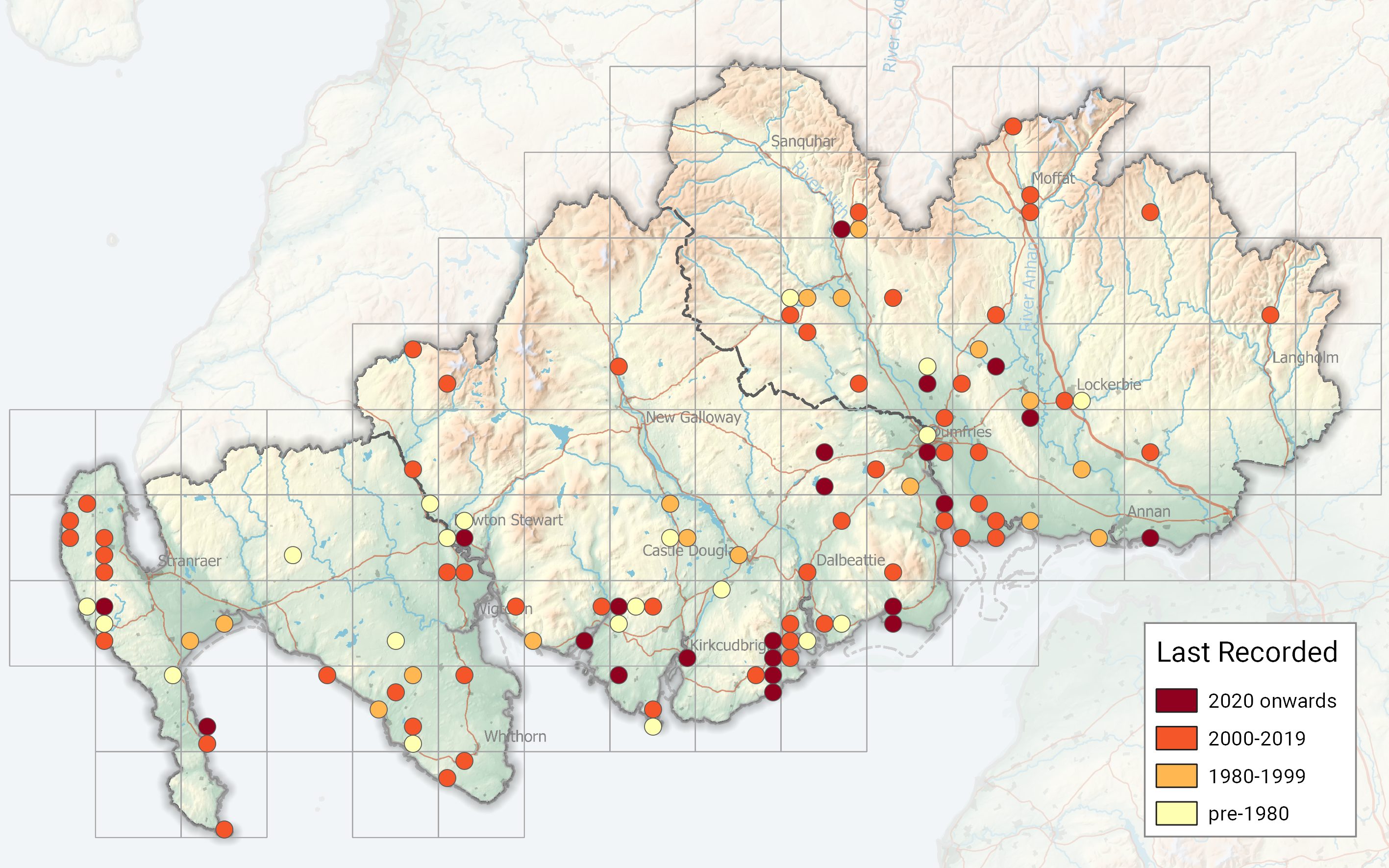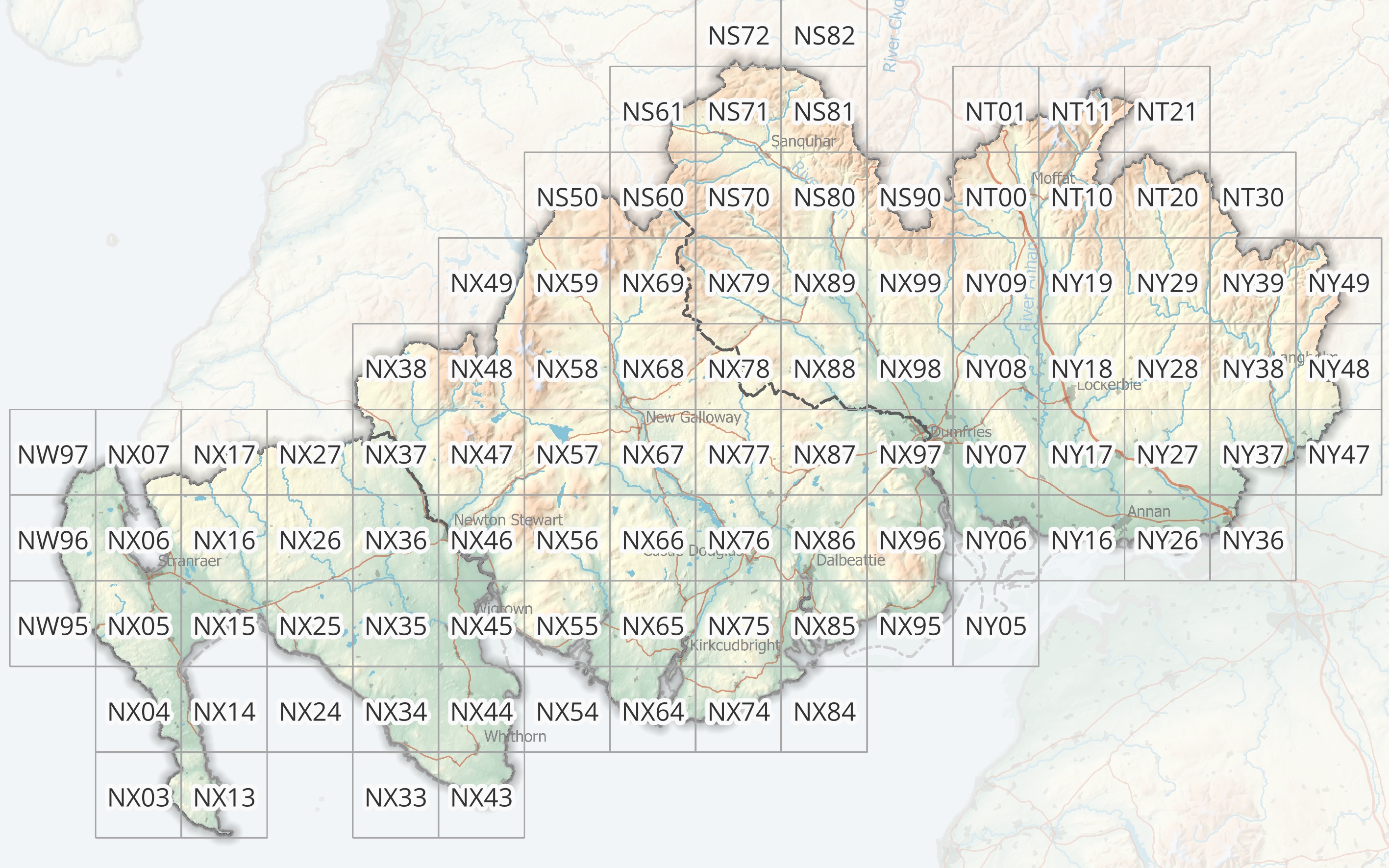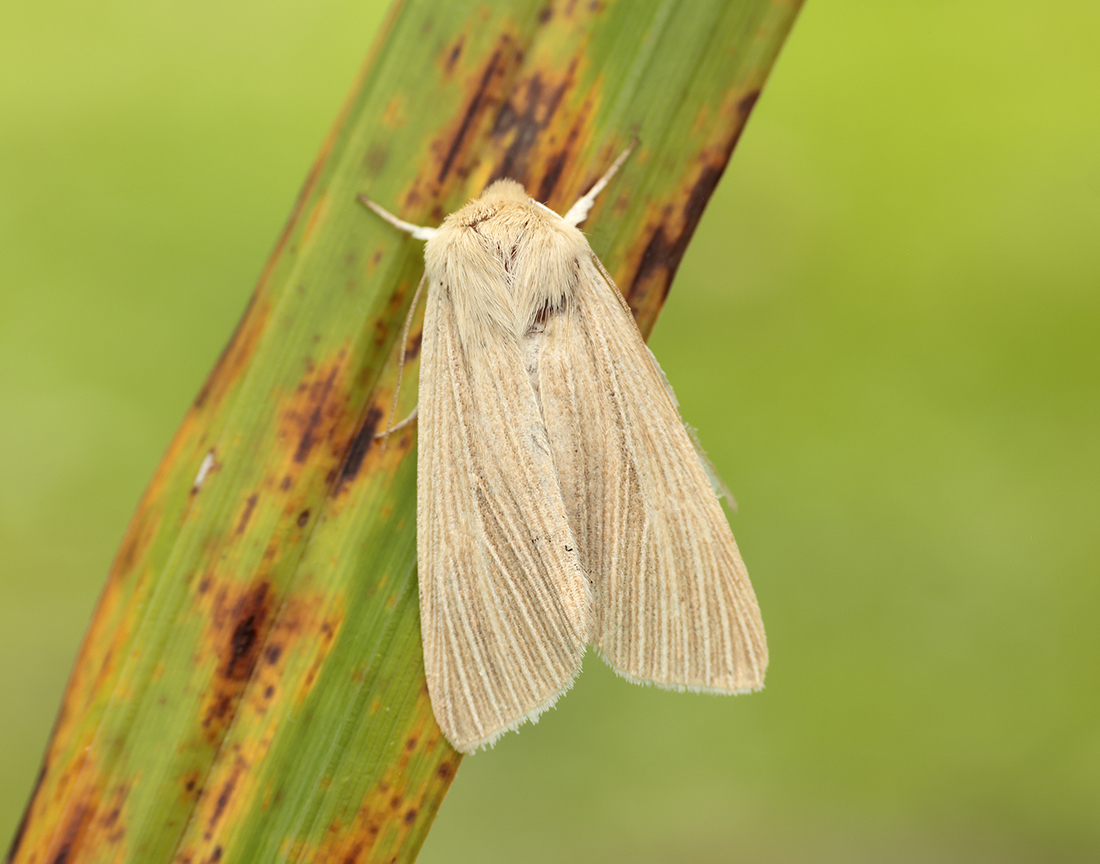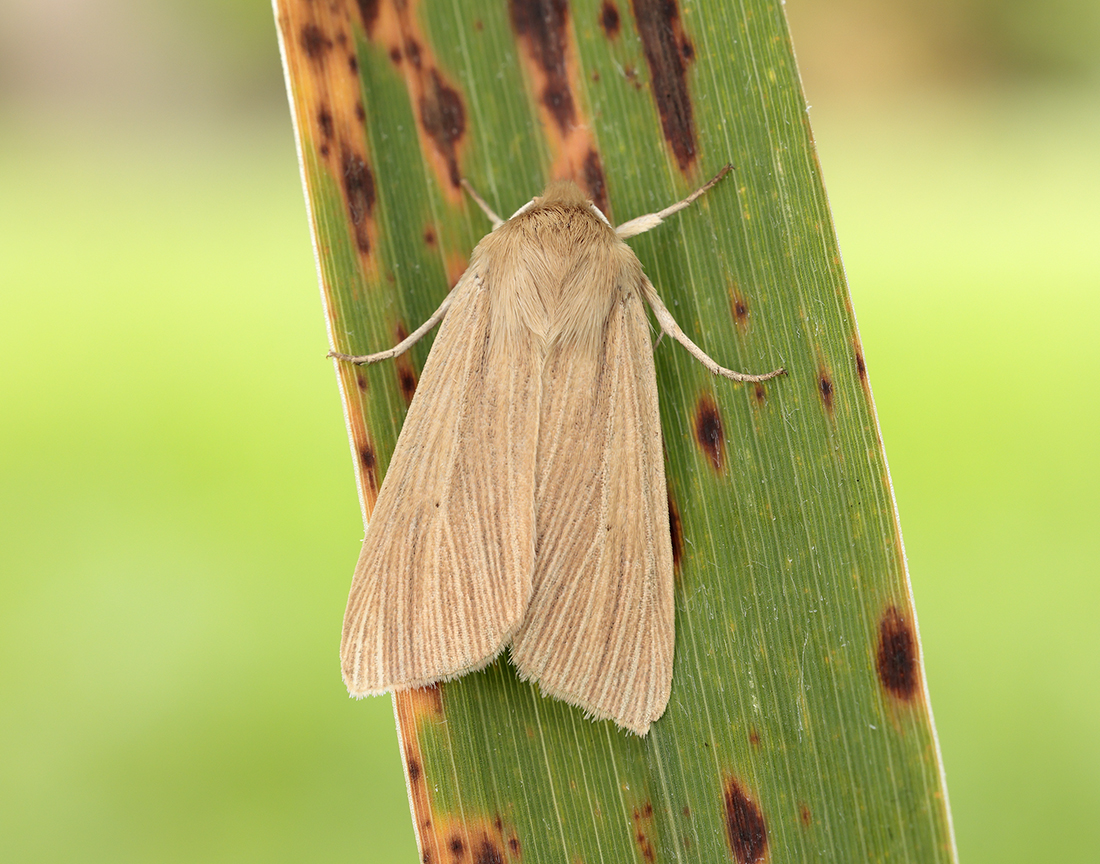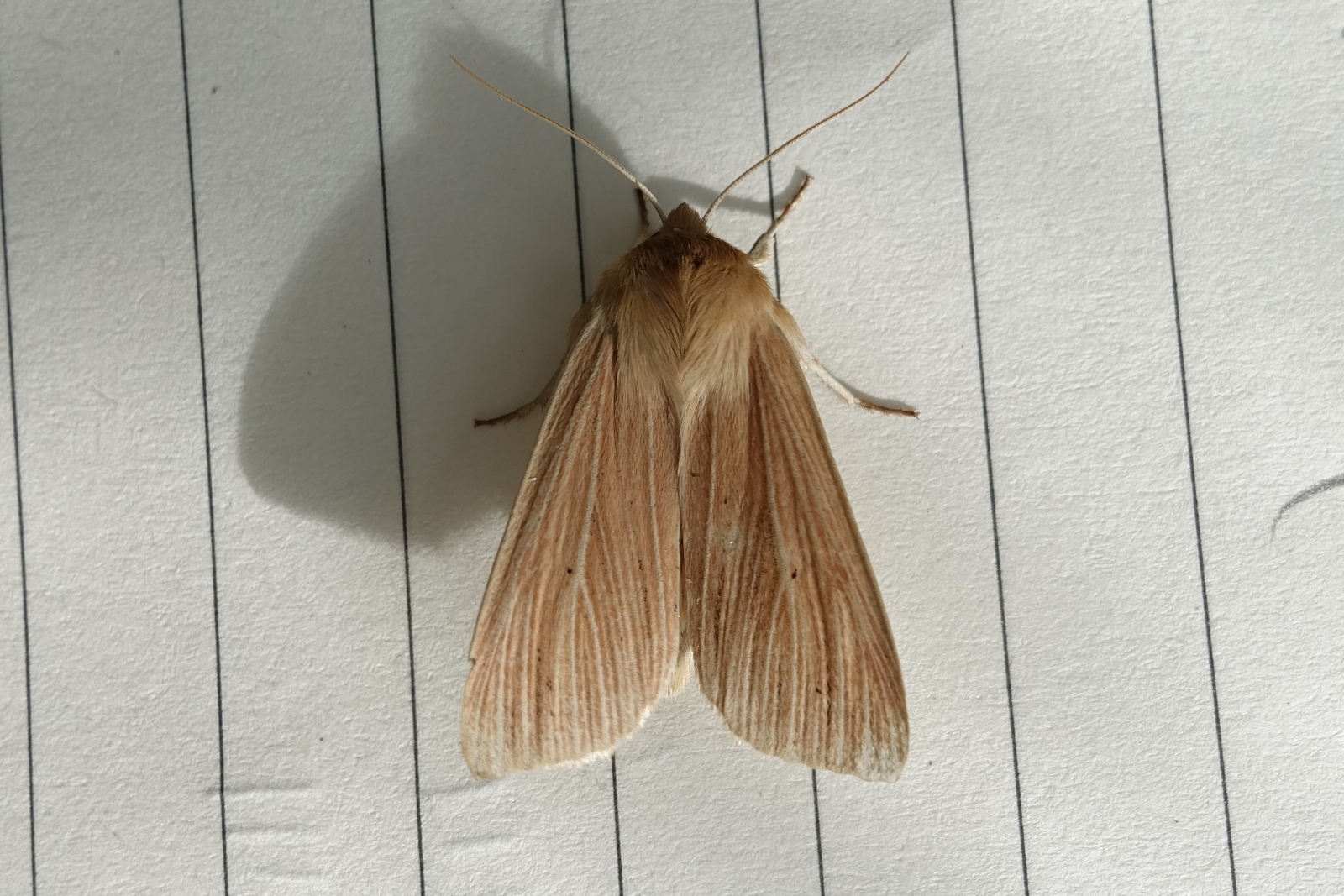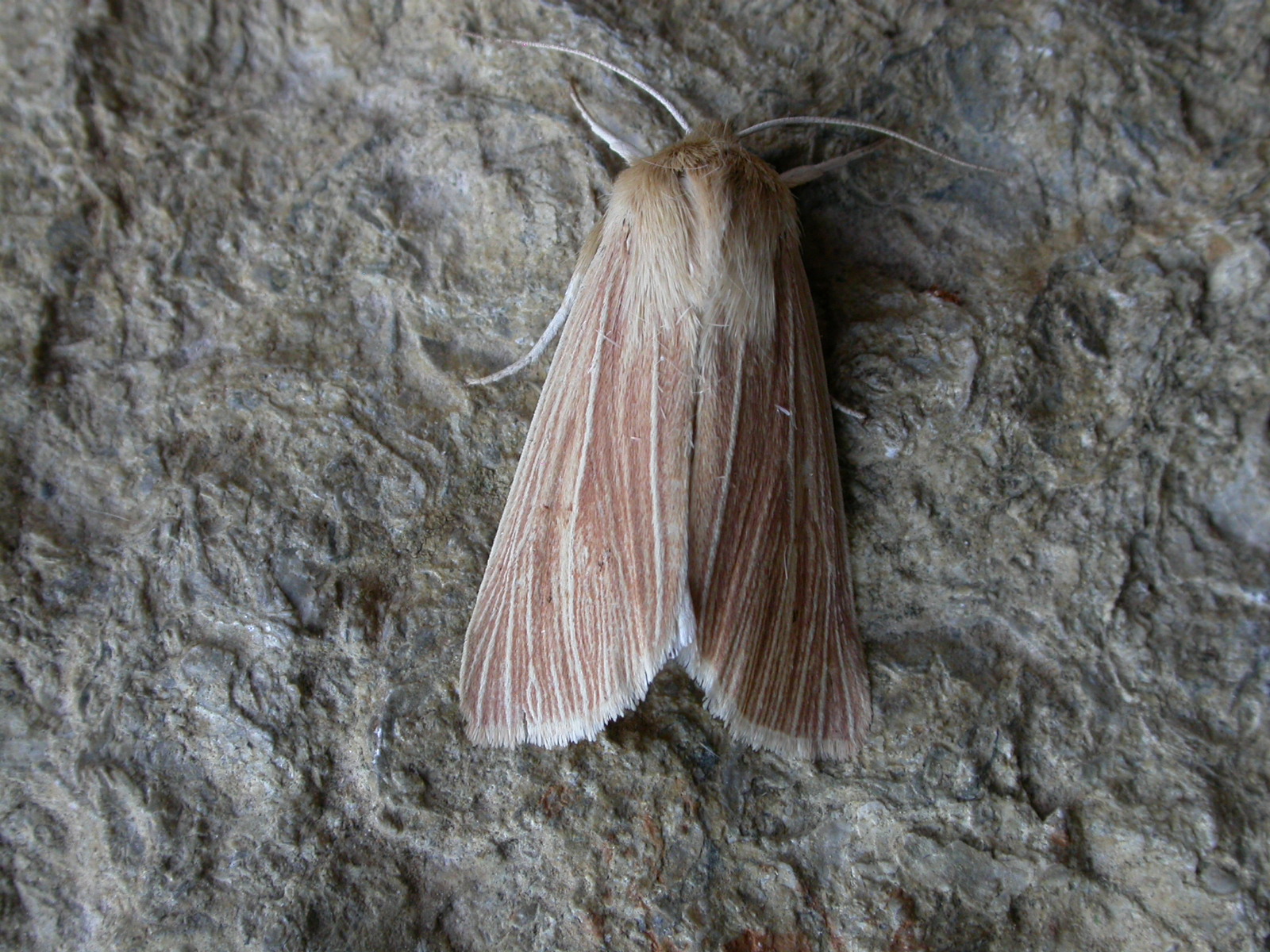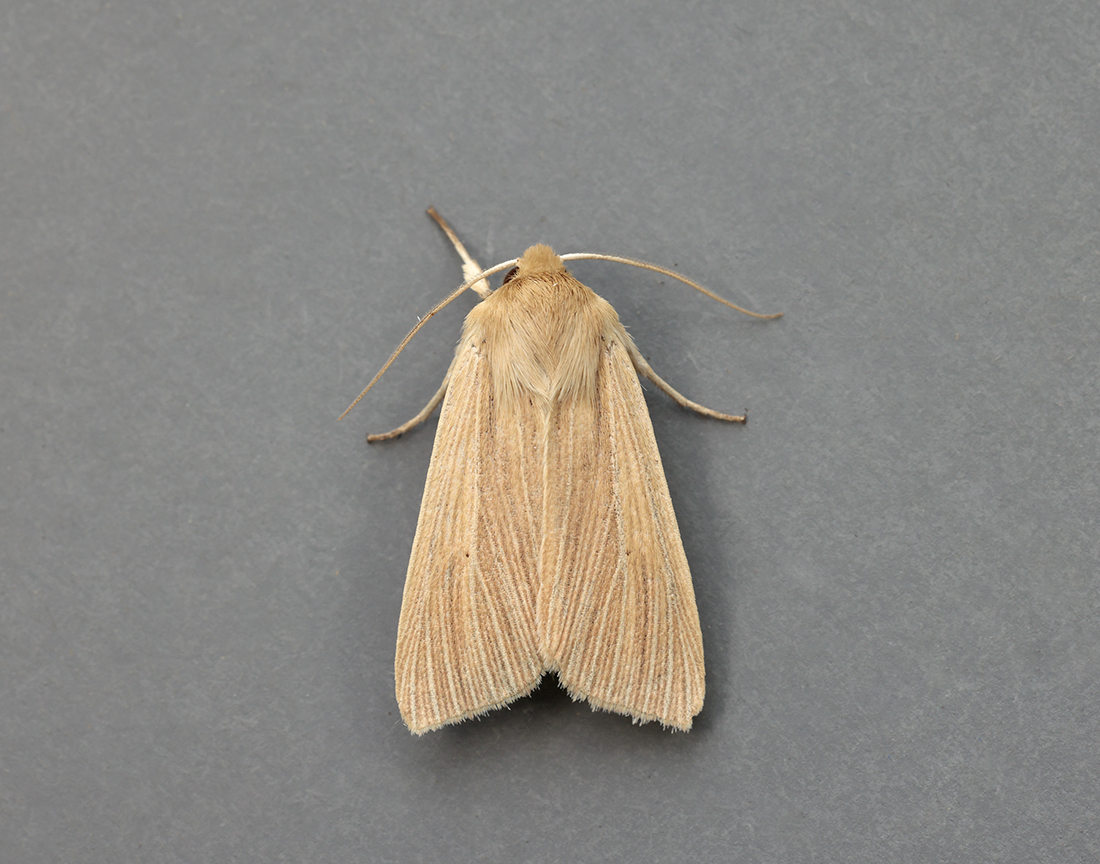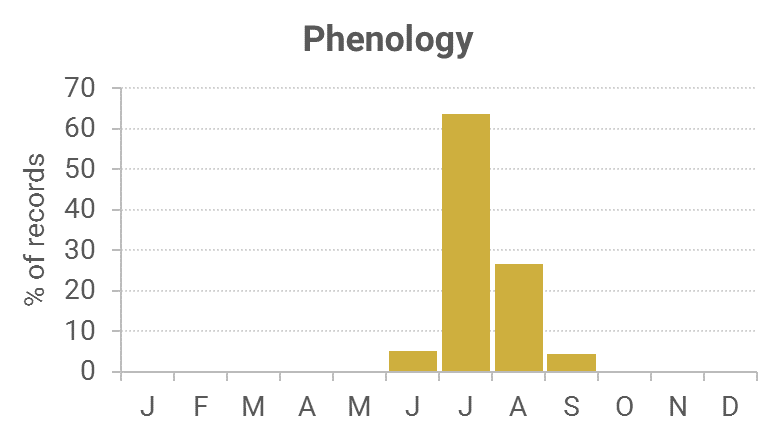Identification
Care needed in separating from other wainscots particularly Smoky and Southern. Forewing generally rather plain and bright without central dark streak, hindwing usually whitish.
Recording Method.
Attracted to light, also comes to sugar and flowers.
Life cycle
One generation. Overwinters as a small larva during August to June.
Larval foodplants
Larvae feed on various grass species.
Habitat
Wide range of grasslands.
History
Lennon (1863) stated that it was common everywhere. Douglas Robinson (1870-71) had found it common in July on Almorness (VC73). K. J. Morton of Edinburgh (1900) whilst on a visit in July 1899 to Wigtownshire had found this species in the Monreith area. Gordon (1913) stated that it was much more scarcer than it formerly was. He had found it at sugar among rushes and on ragwort with the colour varying from pale to deep reddish ochreous. Earliest date was 1st July 1901.
William Evans received specimens from Mowat, the Killantringan lighthouse keeper in 1914 to aid his insect migration studies and others from Little Ross lighthouse in 1915. Sir Arthur Duncan (1909-84) during his lifetime had found it at Closeburn, Tynron and Castlehill, Dumfries (all VC72). Archibald Russell (1944) listed it as occurring near Gatehouse of Fleet (VC73) during the years 1942-43.
During 1974-92 five of the seven Rothamsted stations recorded it moderately, but the two Wigtownshire stations never reported it. A good series of records during 1992-2001 at Kirkton, with Mersehead RSPB also recording it regularly. Elsewhere there are scattered records from widespread sites across the region.

